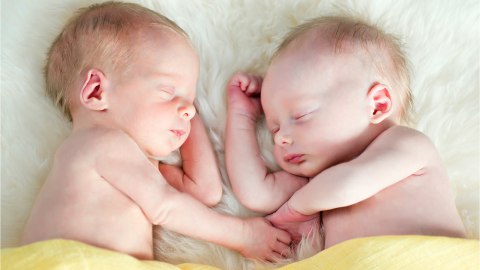Twin Births Increase as Women Wait to Have Children Later in Life

Twins births have hit a record high in America–for every 1,000 births, 33.7 of them result in twins. David Beasley from Reuters reports that these births have increased 76 percent from 1980 to 2009—a trend that officials believe has something to do with the increasing number of fertility treatments, as women are choosing to have children later in life.
As the birth rates among women in their 20s declines, rates among women in their 30s and 40s have hit record highs. However, rates of triplets have dropped—a once expected result of fertility treatments. However, Joyce Martin, an Epidemiologist for the CDC, contributes this decline in the advancements made in the field. Fewer embryos are needed in order to help the treatment succeed.
Teen pregnancies have also hit a low with the abundance of educational programs teaching kids about safe sex, as well as a wealth of methods for birth control from IUDs to condoms. Though, why pregnancies in women in their 20s have declined need only look at the female workforce and tuition fees to find a potential answer. More women are graduating college and going into business, perhaps more women are career-driven–wanting to focus on their jobs before they settle down. There’s also the rising college debt to consider, and more women are enrolled in college than men. This issue could mean more women are waiting to become more financially stable before they begin having a family.
There are a number of factors to consider when looking at these later-in-life-births, according to CDC statistician, Brady Hamilton.
“For women in their 20s, it’s not so much an issue of foregoing a birth as it is postponing a birth. For older women, that’s not a viable option. Also women in their 40s tend to be more stable in their jobs, their incomes.”
Read more at Reuters
Photo Credit: Shutterstock




